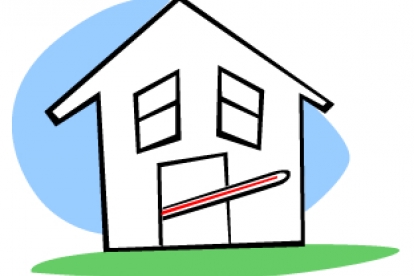
Why ventilate?
When planning for your home, it's easy to think that insulation and sealing is the be-all and end-all of temperature control. Having your building envelope completely sealed though, can cause problems with air quality, and with condensation.
Ventilation should ideally be manually controllable, so that when it’s cold you can close off extra vents to keep heat in, and in hot weather you can let heat escape. How much ventilation you need and where will come down to how much window space is required under the building code, and the climate where you live.
In hotter climates, plenty of ventilation (particularly in roof cavities) is important to allow warm air to escape and keep your house cool. If it also gets cold where you live, being able to control this ventilation will help you to retain the heat in your roof when it's needed.
Ventilation also helps to reduce the chance of moisture build-up in your insulation - which can easily ruin it, or cause moisture damage or rotting in important structural elements in your home.
Ventilation regulations
There are a few building code requirements that dictate how your ventilation needs to work. In particular, the Building Code of Australia (BCA) states that you must have windows and other openings covering at least 10% of the floor space for ventilation purposes. Also, in a room where there's no ceiling fan, the BCA states that you must achieve effective cross ventilation. Ventilation's generally referred to in terms of 'air changes' - the replacement of all of the air in a room.
If you opt for a mechanical ventilation system, you need to ensure that the unit and its installation comply with Australian Standard (AS) 3666.1 'Air handling and water systems of building – Microbial control'. This will dictate the required flow rate and noise level. It also needs to comply with AS 1668.2 'Mechanical ventilation for acceptable indoor air quality'.
Sick building syndrome
Failure to comply with these standards could result in what's known as ‘sick building syndrome’. Studies have shown that people need fresh air and natural light for their health and wellbeing - and more and more studies these days are pointing to indoor air quality as a very serious health risk.
Most of the time, sick buildings are created by inefficiencies with air conditioning and ventilation. Sick buildings are often the result of a build-up of moisture and mould, through a lack of air changes in a room. Living in such a home can lead to eye, nose, throat or skin problems, or hypersensitivity.





